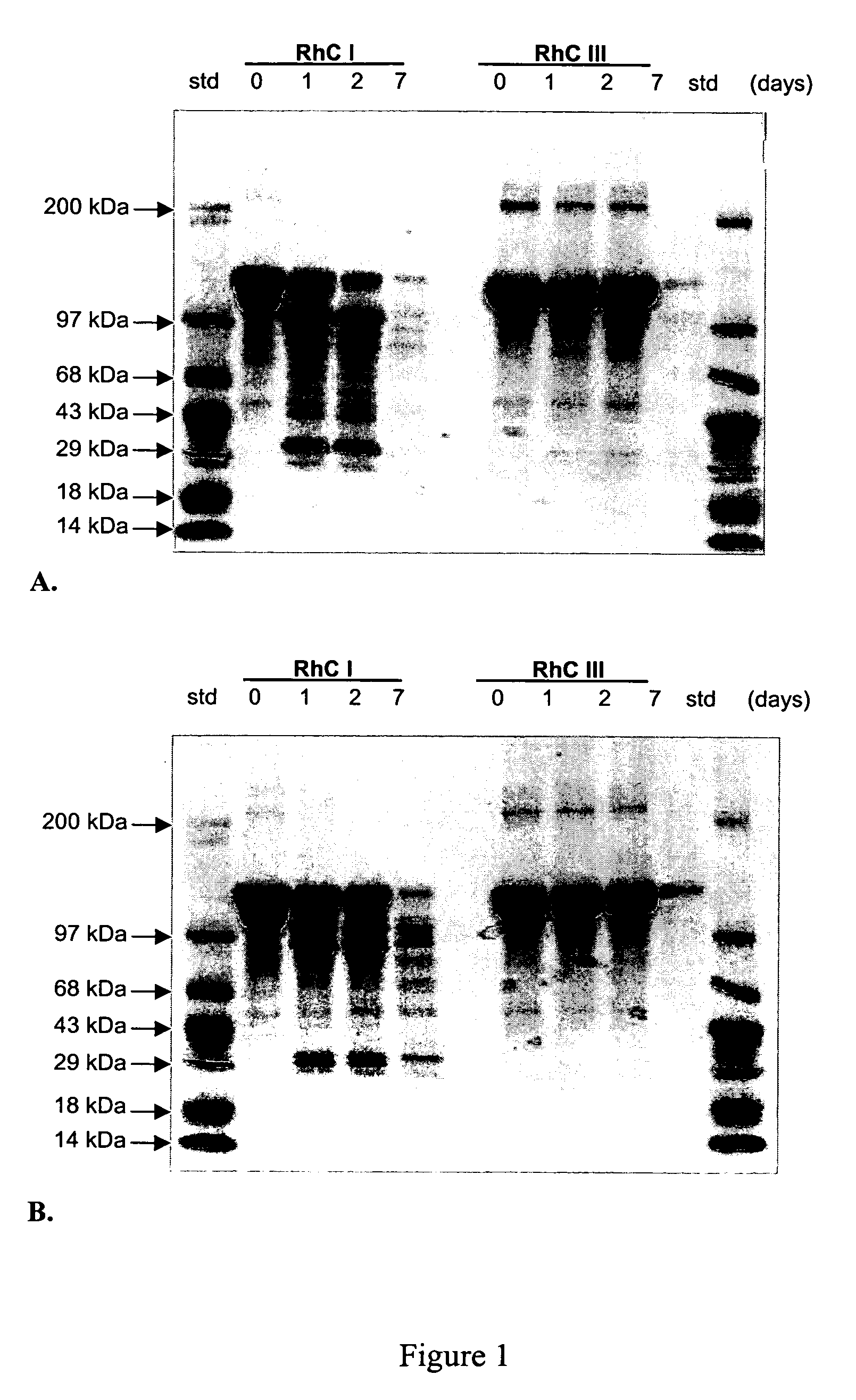Implantable collagen compositions
- Summary
- Abstract
- Description
- Claims
- Application Information
AI Technical Summary
Benefits of technology
Problems solved by technology
Method used
Image
Examples
example 1
Production of Synthetic Collagen
[0077] Synthetic collagens were produced using known methods, as described in, e.g., Vuorela et al. (1997) EMBO J 16:6702-6712 and Nokelainen et al. (2001) Yeast 18:797-806, each of which is incorporated by reference herein in its entirety, with modifications as described below.
[0078] Production of other collagens suitable for use in the present compositions can be specifically engineered using molecular biology techniques know to one of skill in the art. Such collagens can be modified by, e.g., an alteration in the polypeptide coding sequence, including deletion, substitutions, insertions, etc., to increase resistance to degradation. For example, synthetic collagens with alterations in the amino acid sequence at specific protease cleavage sites can be produced. An exemplary collagen for use in the present compositions is a synthetic human type III collagen which contains an isoleucine to proline substitution at amino acid residue 1205 of the human ...
example 2
Persistence of Synthetic Human Collagen in vitro
[0085] The effects of collagenases on synthetic human type III collagen and synthetic human type I collagen, each substantially free of intermolecular and intramolecular crosslinks, were examined. Matrix metalloproteinases (MMPs), also referred to as collagenases, are enzymes capable of cleaving triple-helical collagen. Both MMP-1 (collagenase 1, fibroblast collagenase) and MMP-8 (collagenase 2, neutrophil collagenase) cleave triple-helical collagen types I, II, and III.
[0086] Synthetic human type I collagen and synthetic human type III collagen were prepared as described above in Example 1. MMP-1 pro-enzyme and MMP-8 were obtained from EMB Biosciences (San Diego, Calif.). MMP-1 was converted from the pro-enzyme to the active enzyme according to protocols supplied by the manufacturer. Separate reactions were set up for each MMP used. One milliliter volumes of 2 mg / mL collagen, 50 mM Tris-HCl (pH 7.0), 300 mM NaCl, 5 mM CaCl2, 0.001 m...
example 3
Persistence of Synthetic Human Collagen in vivo
[0089] In vivo persistence of implanted synthetic human type I collagen and synthetic human type III collagen was investigated as follows. Wistar rats (Charles River Laboratories, Inc.) were shaved and an 8 cm×6 cm site for injection was marked the day prior to implantation. Purified collagen preparations in 10 mM HCl at a concentration of 3 mg / mL were mixed with 1 / 10th volume of 0.2 M NaPO4, pH 11. The collagen fibrils were collected by centrifugation at 10,000×g for 15 minutes at 4° C., resuspended in PBS at a collagen concentration of 35 mg / ml, and lidocaine was added to a final concentration of 3 mg / ml.
[0090] Implants were made by subcutaneous injection of 0.5 ml of a 35 mg / ml suspension of synthetic human type I collagen, synthetic human type III collagen, or bovine type I collagen (VITROGEN, Cohesion Technologies) in PBS on the dorsal flank. The collagen suspension was injected using a 1 cc syringe with a 28-gauge needle. Each a...
PUM
| Property | Measurement | Unit |
|---|---|---|
| Fraction | aaaaa | aaaaa |
Abstract
Description
Claims
Application Information
 Login to View More
Login to View More - R&D
- Intellectual Property
- Life Sciences
- Materials
- Tech Scout
- Unparalleled Data Quality
- Higher Quality Content
- 60% Fewer Hallucinations
Browse by: Latest US Patents, China's latest patents, Technical Efficacy Thesaurus, Application Domain, Technology Topic, Popular Technical Reports.
© 2025 PatSnap. All rights reserved.Legal|Privacy policy|Modern Slavery Act Transparency Statement|Sitemap|About US| Contact US: help@patsnap.com

